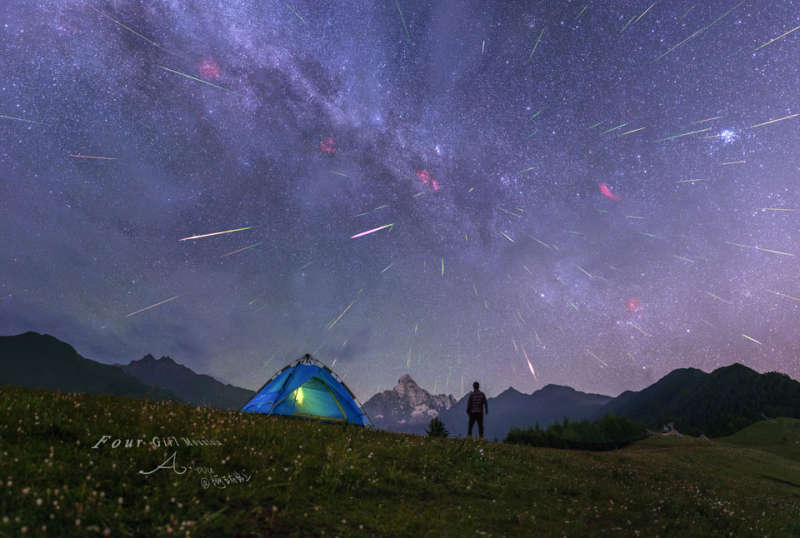
|
Credit & Copyright: Alvin Wu
Explanation:
On some nights it rains meteors.
Peaking over the next two nights,
asteroid dust is expected
to rain down on Earth during the annual
Geminids
meteor
shower.
This year, unfortunately, fainter
Geminids will be harder to see because of the brightness
of the
Long Nights Full Moon,
which occurs Wednesday.
Pictured, an image from
this year's Perseids
meteor shower in August captured multiple streaks over
Four Girls Mountain
in central China.
The bright
Pleaides open
star cluster appears toward the upper right, while numerous
emission nebulas are visible in red,
many superposed on the diagonal band of the
Milky Way.
Free Download:
APOD 2017 Calendar: NASA Images
|
January February March April May June July August September October November December |
| ||||||||||||||||||||||||||||||||||||||||||||||||
NASA Web Site Statements, Warnings, and Disclaimers
NASA Official: Jay Norris. Specific rights apply.
A service of: LHEA at NASA / GSFC
& Michigan Tech. U.
Based on Astronomy Picture
Of the Day
Publications with keywords: meteor
Publications with words: meteor
See also:
- APOD: 2025 August 25 B The Meteor and the Star Cluster
- APOD: 2025 August 6 B Meteor before Galaxy
- APOD: 2024 November 27 B The Meteor and the Comet
- Meteor over the Bay of Naples
- Fireball over Iceland
- APOD: 2023 August 23 B The Meteor and the Galaxy
- APOD: 2023 July 16 B Meteor and Milky Way over the Alps
